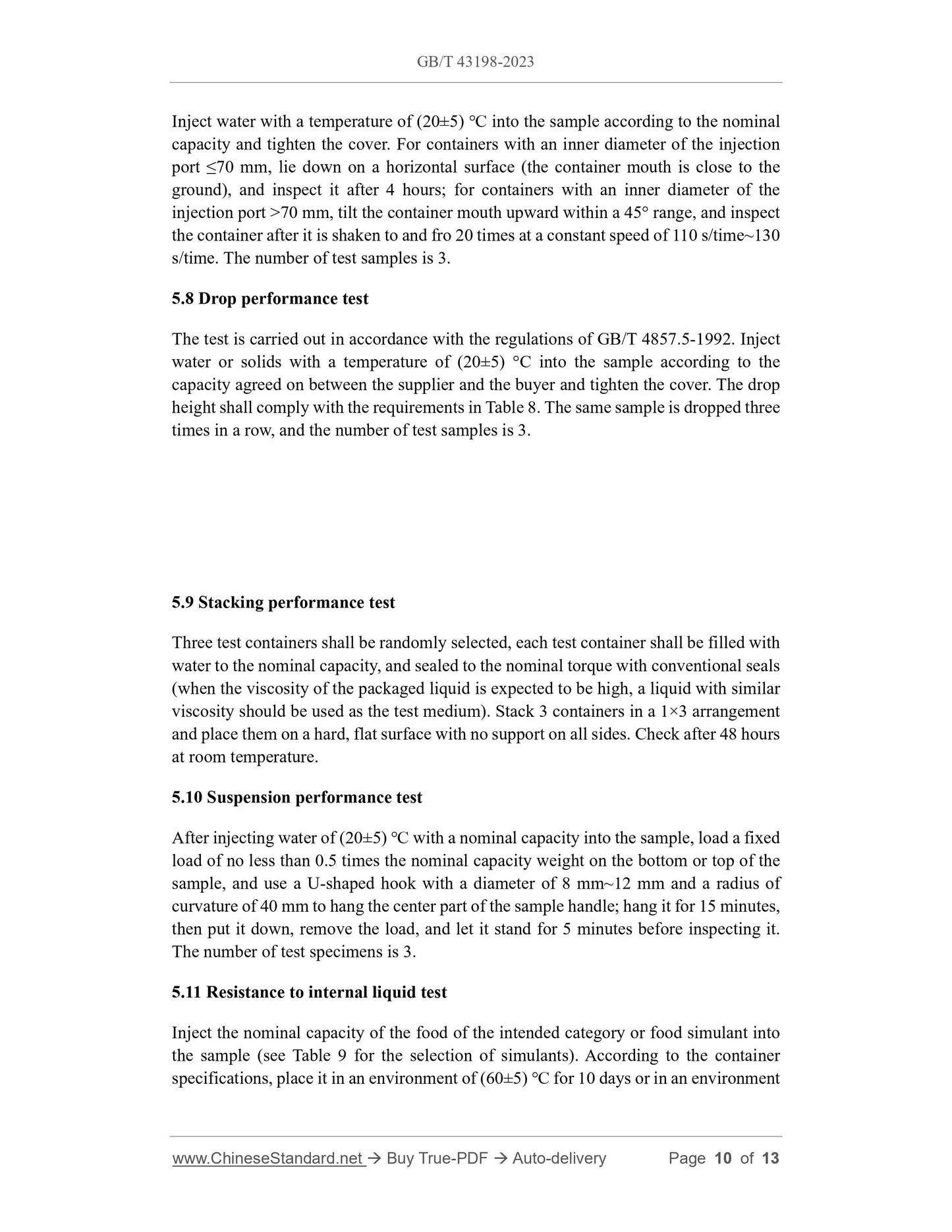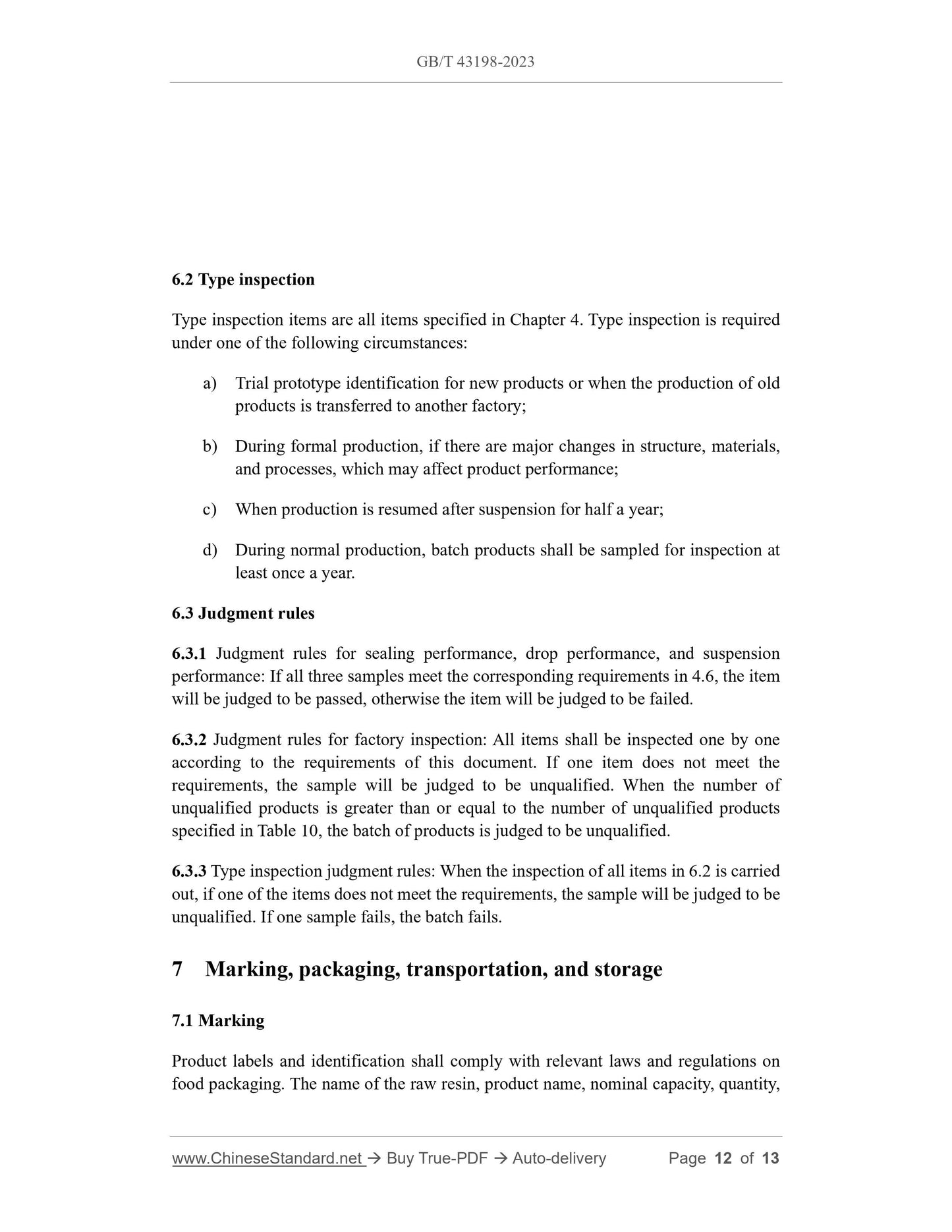1
/
of
5
www.ChineseStandard.us -- Field Test Asia Pte. Ltd.
GB/T 43198-2023 English PDF (GB/T43198-2023)
GB/T 43198-2023 English PDF (GB/T43198-2023)
Regular price
$200.00
Regular price
Sale price
$200.00
Unit price
/
per
Shipping calculated at checkout.
Couldn't load pickup availability
GB/T 43198-2023: Blow-moulded polyethylene containers for packaging of food stuffs
Delivery: 9 seconds. Download (and Email) true-PDF + Invoice.Get Quotation: Click GB/T 43198-2023 (Self-service in 1-minute)
Newer / historical versions: GB/T 43198-2023
Preview True-PDF
Scope
This document specifies the requirements, test methods, inspection rules, marking,packaging, transportation, and storage of polyethylene blow-moulded containers for
food packaging.
This document is applicable to blow-moulded containers for food packaging with a
nominal capacity of 1000 L and less, which are made by using polyethylene as the main
raw material and are formed by using the hollow blow-moulding process.
Basic Data
| Standard ID | GB/T 43198-2023 (GB/T43198-2023) |
| Description (Translated English) | Blow-moulded polyethylene containers for packaging of food stuffs |
| Sector / Industry | National Standard (Recommended) |
| Classification of Chinese Standard | Y28 |
| Classification of International Standard | 55.140 |
| Word Count Estimation | 10,190 |
| Date of Issue | 2023-09-07 |
| Date of Implementation | 2024-04-01 |
| Issuing agency(ies) | State Administration for Market Regulation, China National Standardization Administration |
Share









